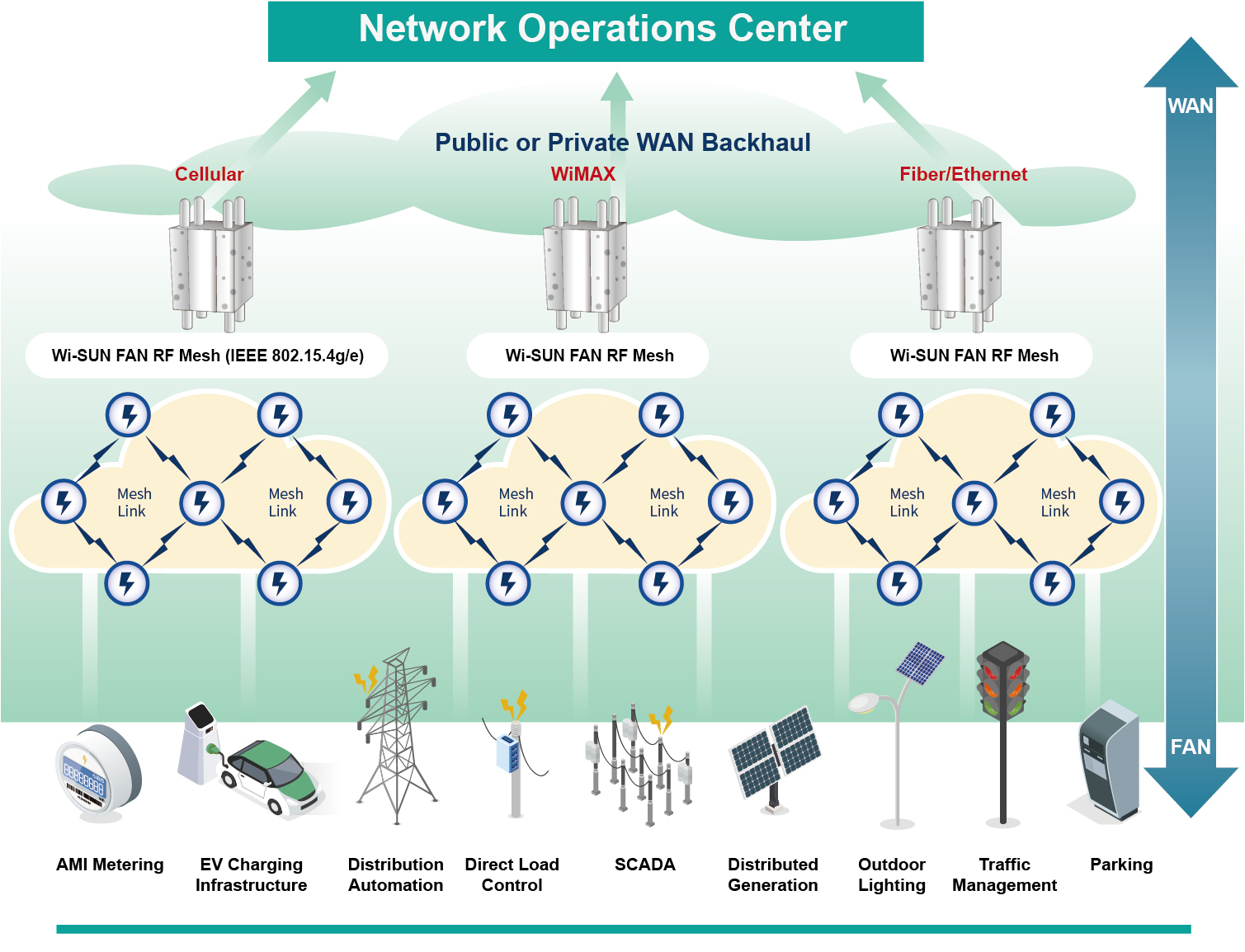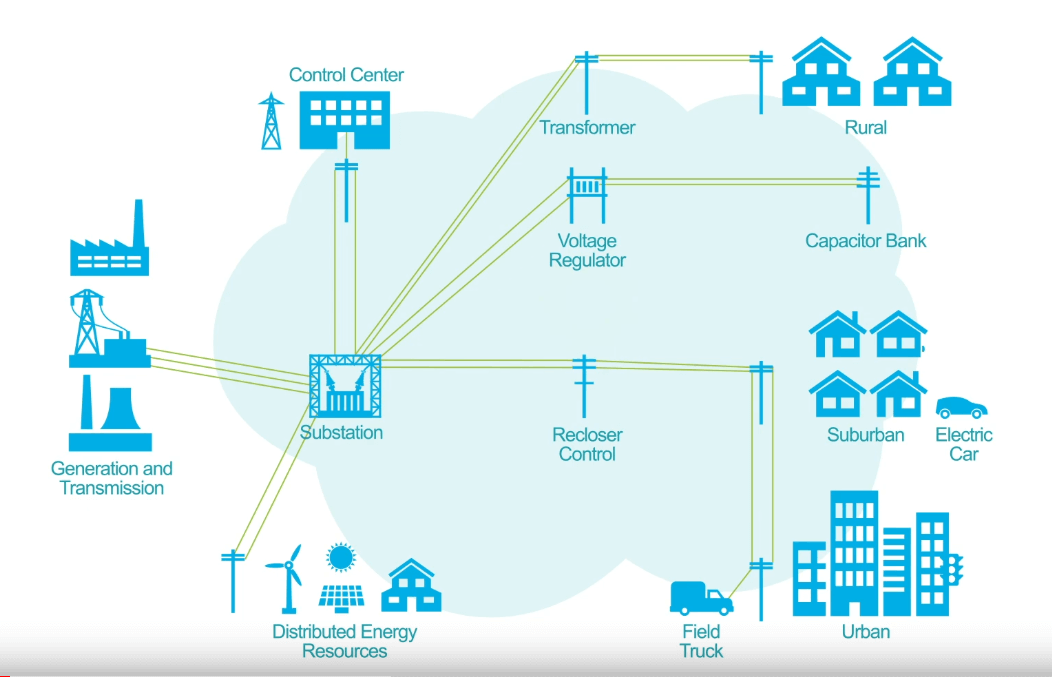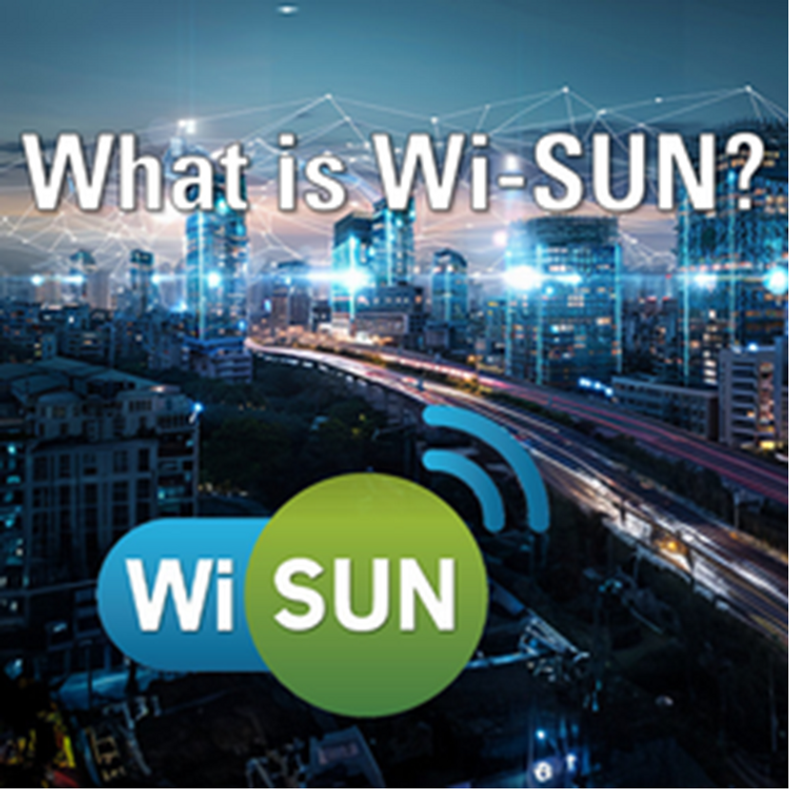As IoT infrastructure scales across utilities, cities, and industrial systems, network engineers face mounting challenges—achieving long-range, low-power communication with resilience and security. Wi-SUN® (Wireless Smart Ubiquitous Network) has emerged as a leading solution for outdoor, large-scale IoT deployments.
In this post, we’ll explore what Wi-SUN® is, how it works, its advantages, and how AG Antenna enhances deployments through precise RF engineering and antenna integration.
What Is Wi-SUN®?
Wi-SUN® is a standards-based, sub-GHz wireless mesh technology designed to support secure, scalable, and low-power IoT networks. Built on the IEEE 802.15.4g/e and IETF 6LoWPAN/IPv6 standards, Wi-SUN enables devices to form self-healing, multi-hop mesh networks with advanced routing, encryption, and seamless scalability.
Wi-SUN® is governed by the Wi-SUN Alliance, an industry consortium that certifies interoperability between compliant devices, ensuring multivendor compatibility and open architecture.
How Wi-SUN® Works: Mesh Deployment and Topology
Unlike traditional star-topology LPWANs (e.g., LoRaWAN or NB-IoT), Wi-SUN® uses a decentralized mesh network, where each device (or node) can serve as a repeater, forwarding data from others toward a gateway.
Key deployment features include:
- Self-forming: Devices automatically join and build the mesh.
- Self-healing: If a node fails, the network reroutes around it.
- Frequency hopping: Reduces interference and improves link reliability.
- IPv6 addressing via 6LoWPAN: Enables millions of addressable endpoints.
This makes Wi-SUN ideal for large-area, infrastructure-grade IoT networks where continuous uptime and wide coverage are essential.

Technical Architecture and Standards
Wi-SUN is based on the following standards:
- IEEE 802.15.4g/e: Physical and MAC layer operation in unlicensed sub-GHz bands (such as 868 MHz, 915 MHz).
- 6LoWPAN: Lightweight IPv6 over low-power wireless personal area networks.
- RPL: IPv6 routing protocol for low-power and lossy networks.
- TLS + PKI: Wi-SUN FAN uses certificate-based authentication and end-to-end encryption.
Wi-SUN also supports data rates up to 2.4 Mbps, with typical latency ranging from 20 ms to 1 second—an order of magnitude faster than many LPWAN alternatives.
Advantages of Wi-SUN® for IoT Networks
- Scalability
Wi-SUN can support tens of thousands of nodes within a single network. Its IPv6 foundation and mesh architecture allow infrastructure-scale deployments with minimal overhead.
- Resilience
With self-healing mesh logic, Wi-SUN maintains data delivery even when nodes go offline or RF conditions change. This is critical in utility and smart city environments with dynamic interference.
- Security
Wi-SUN implements certificate-based authentication, device whitelisting, encryption, and secure boot. It meets utility-grade cybersecurity requirements for grid infrastructure and public networks.
- High Throughput
Wi-SUN’s modulated sub-GHz PHY and adaptive routing enable higher data rates than typical LPWANs. This allows richer sensor data, firmware updates, and diagnostics over the air.
- Low Power
With Wi-SUN FAN 1.1 Low Energy mode, battery-powered field sensors can achieve 10–15 year lifespans on a single cell—ideal for electric/gas meters, environmental monitors, and more.
Use Cases and Applications
Wi-SUN’s unique combination of throughput, resilience, and scale makes it ideal for:
- Smart Utilities
- Advanced Metering Infrastructure (AMI)
- Fault location and restoration (FLISR)
- Grid monitoring and low-voltage switchgear
- Smart Cities
- Connected street lighting
- Parking systems
- Environmental sensors (air quality, noise)
- EV charging management
- Industrial IoT
- Agricultural sensors across wide acreage
- Water treatment and waste management
- Oil & gas telemetry
- Mining and logistics yard tracking
These environments demand consistent signal coverage, adaptive mesh routing, and efficient use of the sub-GHz spectrum—making Wi-SUN the protocol of choice.

RF Optimization for Wi-SUN® with AG Antenna
While the Wi-SUN protocol defines how devices communicate, RF hardware and antenna deployment define how well they communicate. At AG Antenna, we design and deliver antenna systems purpose-built for high-reliability Wi-SUN mesh networking.
Browse AG Antenna Solutions for Wi-SUN Deployments:
- Frequency-matched antennas for US915 and EU868 MHz bands
- Omnidirectional or directional gain options based on node roles (e.g., relay vs gateway)
- High-isolation, low VSWR designs to reduce self-interference in dense networks
- Rugged, weatherproof enclosures for utility pole or smart city environments
- Low-loss coaxial cables (AGA240, AGA400) and mounting kits for precision placement
- Consultative support for antenna layout, spacing, interference planning, and node density optimization
We work with network engineers to design layouts that maximize mesh performance, node coverage, and battery life—ensuring that Wi-SUN performs as intended in real-world deployments.
Bringing it All Together
Wi-SUN® offers an open, resilient, and scalable mesh networking solution for critical IoT infrastructure—outperforming traditional LPWANs in environments where uptime, range, and data integrity matter.
But just as important as the protocol is the RF layer. AG Antenna delivers the high-performance antenna systems, cable assemblies, and deployment guidance needed to bring Wi-SUN to life.
Ready to build a next-generation Wi-SUN mesh? Contact AG Antenna to optimize your network’s RF performance from the ground up.

